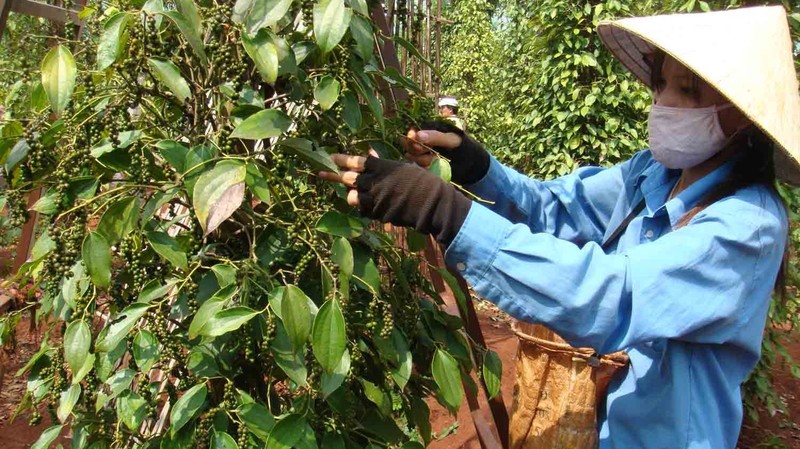The Ministry of Agriculture and Rural Development said that the country had about 142,800 ha of pepper trees by the end of 2019, down 4,700 ha compared to the previous year. The output reached 264,000 tonnes, an increase of 1,200 tonnes compared to the previous year.
This farming area is tens of thousands of ha higher than the recommended planning. Because of the increasing price of pepper in previous years, at up to VND250,000 per kg, many local households have invested in expanding their planting areas.
The ‘overheating’ development of pepper has brought about adverse effects to growers. The Central Highlands and Southeast provinces have entered the harvest of pepper, but traders are buying pepper at very low prices, sometimes as low as VND36,000 per kg.
It is forecast that pepper prices will continue to decrease in 2020because the supply still exceeds demand. Meanwhile, production costs have increased and productivity has decreased.
Some farming areas have seen productivity falling by 10 to 20% due to unfavourable weather and harmful pests and diseases. In addition, rates for hiring labourers is getting higher at about VND200,000 day. Pepper growers seem to be sitting on a "fire" because their income is not enough to compensate costs.
According to forecasts of the authorities, the price of pepper is expected to increase slightly in 2021 when the farming area and output of pepper in the world decreases. This is considered a good signal for pepper growers and the pepper industry in general.
In order to develop the pepper industry in a sustainable and long-term manner, the farming areas of pepper should be cut to ensure the supply does not exceed demand.
However, the transition to other crops should be implemented as recommended, avoiding the mass production of one crop or excess supply which can result in losses for farmers.
In addition, it is necessary to support enterprises in the field to continue expanding markets and boosting trade promotion into large and demanding markets such as the US, the EU and Japan.
They also need to foster domestic consumption and join production linkages with farmers to increase business efficiency and ensure stable output.
Local authorities should guide people to carry out intercrop with other suitable crops to increase economic efficiency. Meanwhile, farmers are encouraged to replicate sustainable production models and reorganise production towards cooperative groups and applying advanced process of farming techniques, control pest and diseases while promoting the traceability of their products.
















